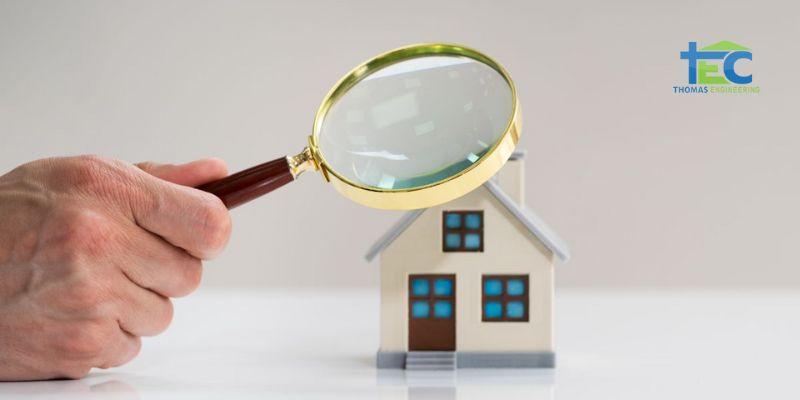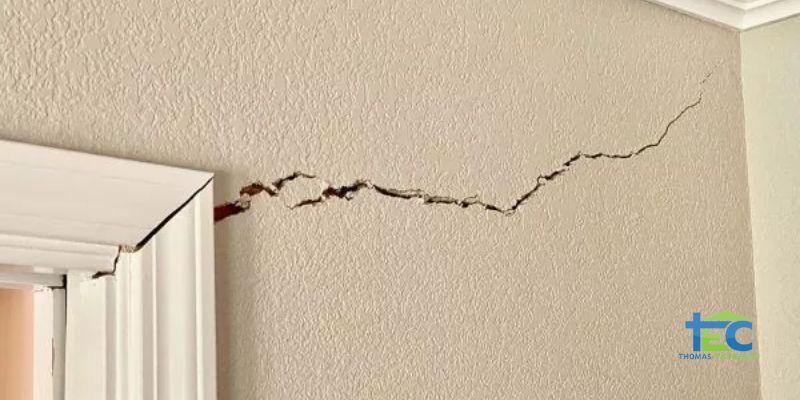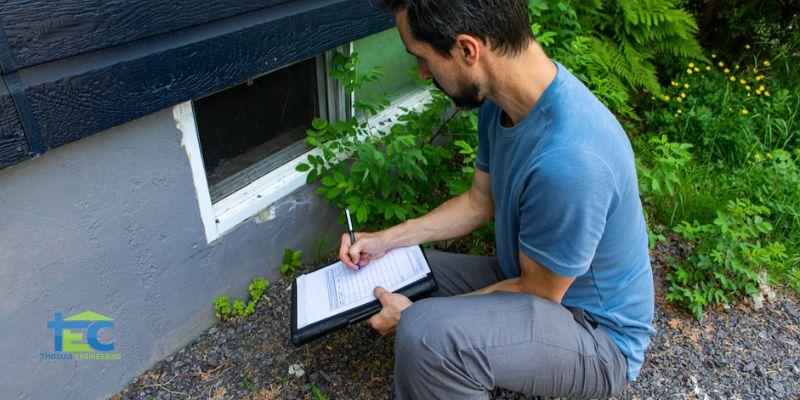
The Dallas Fort Worth area of Texas is known as the “Blackland Prairie.” Many years ago, pioneers settled in North Texas due to the area’s outstanding agricultural potential. While expansive clay soils in the Dallas Fort Worth area are excellent for crop production, they can wreak havoc on your home’s foundation. Luckily, there are a few things that you can do to protect your home from foundation damage. Keep reading for tips from a structural engineer on how to maintain your home foundation in Texas!
Dallas is home to Texas Blackland Prairie soils. The clay soils in this region have high shrink-swell properties that require special design accommodations to ensure proper structural integrity.
Tip #1 – Perform Periodic Visual Inspections
Clay soils have high plasticity, or “shrink-swell” potential. The constant shrinking and swelling beneath your foundation can cause settling and compromise the structural integrity of your home.
As a homeowner, you should perform periodic visual inspections of your home’s interior and exterior features. Look for evidence of foundation movement including; binding or warped windows or door frames, unevenness in floors or walls, exterior mortar or brick fractures, and interior or exterior cracking.
When scanning for cracks, pay attention to:
- Cracks in interior sheetrock
- Cracks around windows or door frames
- Cracks in trim boards and grade beams
- Exterior cracks in brick chimneys, concrete patios, garage floors, or porches
If you notice any of these common signs of foundation settling, it’s best to consult an independent engineer for an unbiased foundation evaluation.
Tip #2 – Run Your Sprinkler System Year-Round
You should never shut off your irrigation system in Texas, not even during the winter months. At a bare minimum, your property requires proper lawn and landscaping maintenance in addition to one inch of rainfall (artificial or otherwise) per week to avoid overly dry soil conditions. It should be noted that sprinkler systems alone seldom supply the needed moisture to the soils.
Tip #3 – Water Your Foundation
The highly plastic clay soils found throughout Texas decrease in volume when dry and expand significantly when wet. A variety of factors affect soil moisture content including; seasonal moisture variations, vegetation, and precipitation patterns. Typically, in Texas, the clay soils shrink during the summer and swell during the winter.
How can I avoid having foundation problems?
While it is impossible to eliminate all foundation settling, it is possible to stabilize your foundation and minimize future movements by controlling the soil moisture content. As a homeowner, you can control moisture variations with strategic foundation watering. Your goal should be to maintain a high, uniform moisture level in the foundation soils by restoring moisture lost due to evaporation, plant transpiration, and seepage.
Consider this…
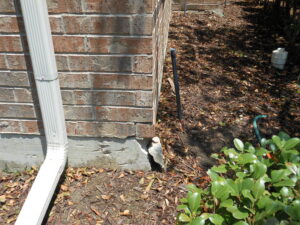
When a home is constructed, and landscaping installed, the natural effects of climate and precipitation on the soils are modified. Over time, the soils towards the center of your home’s foundation tend to be wetter than the soils along the perimeter of your home. The soils around the edges of your foundation may dry out and shrink during the hot summer months. As a result, your foundation will attempt to conform to the shape of the supporting soils. The constant movement causes stress on your home and cracks may begin to form. Once the cracks form, they may grow at an aggressive rate if the shrink swell cycles are allowed to continue. As such, we recommend installing a custom foundation watering system. A separate foundation watering system allows homeowners to apply balanced artificial precipitation to the soils near the foundation. This variation of drip irrigation is designed to slowly release moisture to allow proper absorption and prevent runoff.
How can I tell if the soil around my house is getting enough moisture?
One way to check to see if your soils are getting enough moisture is to inspect the perimeter of your home. Do you notice soils pulling away from your foundation? Do you see any cracks in the soil? Does your landscaping show signs of stress such as wilting or leaf drop? If so, the frequency and amount of watering should be increased.
Tip #4 – Tackle Drainage Problems
We’ve already discussed tips for preventing clay soils from shrinking, but how can homeowners prevent soils from expanding? While it is important to maintain moisture in the soils around and beneath the foundation of your home as discussed above, it is equally important that positive drainage away from your home be maintained at all times.
What is positive drainage?
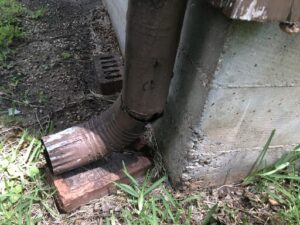
Home gutter system needs extension for positive drainage.
To put it simply, positive drainage means that the soil around your home is graded and sloped to direct water away from your home’s foundation.
How does poor drainage affect my foundation?
Ponding water near your foundation can cause clay soils to swell and lift your concrete or pier and beam foundation. Adversely, excessive water flow near your home foundation can cause erosion and lead to settling.
Foundation drainage guidelines:
- Never allow water to accumulate near your foundation
- Make sure your home has a full gutter system with extensions
- Gutter extensions should discharge away from your foundation (min 5 feet)
- Install drainage solutions when necessary
Tip # 5 – Keep Trees and Shrubs Away from Your Foundation
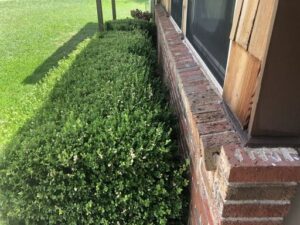
Shrubs are too close to home foundation.
Trees or numerous shrubs growing too close to a foundation can dramatically affect the moisture content of the soils beneath your home. Heavy root systems rob moisture from underlying soils causing the soil to shrink and settling to occur.
Here are your options if you have trees and shrubs that are affecting your foundation:
- Increase watering frequency
- Remove the tree
- Install a foundation watering system
- Install a root barrier
While it may be impossible to completely eliminate the threat of foundation settling, by following these 5 tips you can do your part to maintain your foundation and protect your biggest investment – your home.



